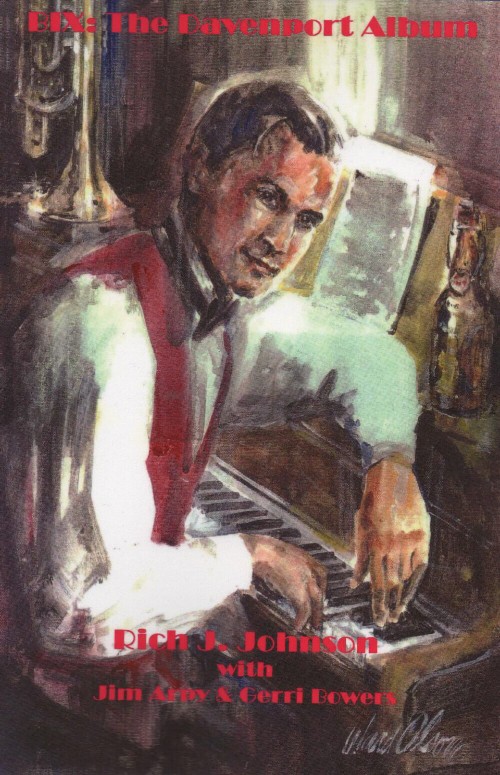Bix: The
by
Rich J. Johnson
with
Jim Arpy
& Gerri Bowers
ISBN # 9780977401857
Library of Congress No.
2009930592
Release Date: 24 July
2009
Publisher:
Price: $35
Review
Nine
biographies of Bix Beiderbecke,
the jazz genius from
Richard
Johnson, in collaboration with Jim Arpy and Gerri
Bowers, has written a tenth, Bix: The
It
is, therefore, pertinent to ask if the world really needs another book about Bix. The answer to this question is a resounding yes,
because Rich Johnson’s book is not just another Bix
biography.
Bix: The Davenport Album is a very unusual book,
compendium of photographs, scrapbook, detailed genealogical research,
collection of documents pertaining to Bix, thoughtful
and perceptive commentaries and analyses by Rich, the book is all that and
more. It is a highly personal account of one of the world’s most
faithful and knowledgeable “Bixophiles.”
After reading one of the comprehensive Bix
biographies, one has a good knowledge of what Bix did
during his, alas, short life, where he was, the music he played and composed,
the circles he frequented, his fellow musicians, the jazz and dance band scenes
in the 1920s, but Bix, the man, remains a bit elusive.
After
reading Rich’s book, one has the impression of having met Bix, the individual, knowing about his family, about his
early years growing up in Davenport, what were the elements that contributed to
making Bix what he was, a most gifted and creative
musician; one begins to understand … no, it is not possible to understand
genius; but “Bix: the Davenport
Album” gives us a glimpse of how extraordinary Bix
was, and a good view of the environment where he developed and fulfilled his
unprecedented gift and his undivided passion in life, music.
My
most vivid impression of the book is that is like Bix’s
music. When you start listening to a Bix record, in
particular to one of his solos, you never know what is going to happen next.
The same effect occurs when reading Bix:
The
Turning
to Bix, there are many fascinating documents, several
of which are relevant to the question of Bix’s
middle name: a church directory that gives Bix’s
name as Bismark; Mary Hill’s estate papers
where Bix’s mother signs for him (Bix was a minor at that time) as “Leon Bismark Beiderbecke”.
There
is a very interesting section with the title “Musical Roots” where
not only the musical background of Bix’s
relatives and Bix’s musical education are
presented, but also witnesses accounts –trumpet player Max Kaminsky and pianist Armand Hug- of Bix’s
ability to write music and generosity in helping young musicians.
There
is a very important finding, namely, an article in the Davenport Democrat where
Bix’s mother states unequivocally that she and
her husband listened to the Paul Whiteman Gold Hour radio programs and she
demonstrates her deep understanding of Bix’s
role in the Whiteman band. And there is a letter from Bismark
to his daughter Mary Louise in which he writes about his very warm feelings
toward his son Bickie (Bix).
Such documents should help dismiss the myth of Bix’s
strained relationships with his parents.
There
are several fascinating vignettes – “Family Friends Remember Bix,” “Excursion Boats,” “Bix and the Shimmy Queen,” “Bix
and Red,” “Bix and Bing,” “Satchmo Toots Bix’s
Horn,” “The Guy Who Flunked Bix,”
etc., all written in a fluid style and with a helping of Rich’s famous
wit.
Rich
was a generous host for Bixophiles visiting
Albert Haim
June 2009
